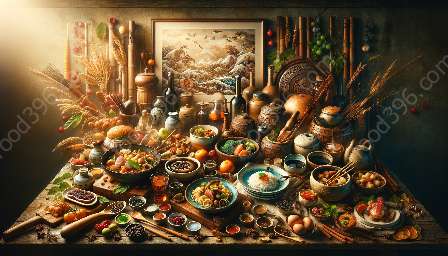As the world becomes more interconnected, the fusion of different cultures and their culinary traditions has given rise to a rich and diverse culinary landscape. One of the most exciting phenomena born out of this cultural cross-pollination is fusion cuisine, where traditional ingredients, cooking techniques, and flavors from different cultures are melded together to create new and innovative dishes.
The history of fusion cuisine is a testament to the dynamic interplay of cultures and the adaptation of culinary traditions. It is not just a mere blending of ingredients, but rather a deep appreciation and understanding of the flavors and techniques of different cultures, resulting in a harmonious fusion that reflects the essence of each traditional cuisine while creating something entirely new.
The Evolution of Fusion Cuisine
Fusion cuisine has its roots in the ancient history of cultural exchange and trade routes that connected distant lands. As civilizations interacted and traded spices, ingredients, and culinary knowledge, they began to influence each other's cuisines, giving birth to new culinary traditions.
One of the earliest examples of fusion cuisine can be traced back to the Silk Road, where the exchange of goods, including spices and cooking techniques, between the East and the West, led to the blending of flavors and culinary practices. This exchange laid the foundation for the fusion of Asian, Middle Eastern, and European cuisines, leading to the creation of dishes that combined the best of both worlds.
The advent of colonization and the age of exploration further accelerated the fusion of culinary traditions. European explorers, traders, and colonizers introduced new ingredients, such as tomatoes, potatoes, and chili peppers, to distant lands, forever altering the culinary landscapes of the Americas, Asia, and Africa. This resulted in the integration of these new ingredients into traditional recipes, giving rise to new and vibrant variations of local cuisines.
Cultural Influences on Fusion Cuisine
One of the defining features of fusion cuisine is the seamless integration of diverse cultural influences. By borrowing and adapting ingredients, cooking techniques, and flavors from different cultural traditions, fusion cuisine creates a magnificently diverse culinary tapestry that celebrates the world's cultural heritage while pushing the boundaries of traditional culinary norms.
One such example is the fusion of Asian and Latin American cuisines, which has given rise to innovative dishes that combine the bold and spicy flavors of Latin cuisine with the delicate and aromatic profiles of Asian cooking. The marriage of ingredients such as soy sauce, chili peppers, and citrus fruits with Latin staples like tomatoes, corn, and beans has resulted in a plethora of tantalizing dishes that are both comforting and adventurous.
Similarly, the fusion of Mediterranean and Middle Eastern cuisines has produced an eclectic array of dishes that marry the rich and robust flavors of the Mediterranean with the fragrant and aromatic spices of the Middle East. The blending of ingredients such as olives, olive oil, and citrus with Middle Eastern staples like sumac, za'atar, and tahini has resulted in a harmonious fusion of flavors that is as captivating as it is delicious.
Impact and Significance
The impact of cultural influences on fusion cuisine extends beyond the realm of culinary experimentation. It serves as a powerful tool for cultural exchange and understanding, bridging the gaps between different societies and fostering a deeper appreciation for the diversity of our global heritage.
Additionally, fusion cuisine plays a vital role in the evolution of culinary arts, inspiring chefs and home cooks alike to experiment with new ingredients, techniques, and flavor combinations. This continuous process of innovation and exploration keeps culinary traditions vibrant and relevant in an ever-changing world, ensuring that the legacy of traditional cuisines endures while welcoming new and exciting developments.
In conclusion, cultural influences on fusion cuisine reflect the dynamic and ever-evolving nature of our interconnected world. It is a celebration of diversity, creativity, and ingenuity, encapsulating the best of what different cultures have to offer while creating a bold and progressive culinary landscape that continues to inspire and delight food enthusiasts worldwide.

